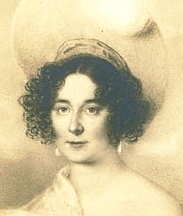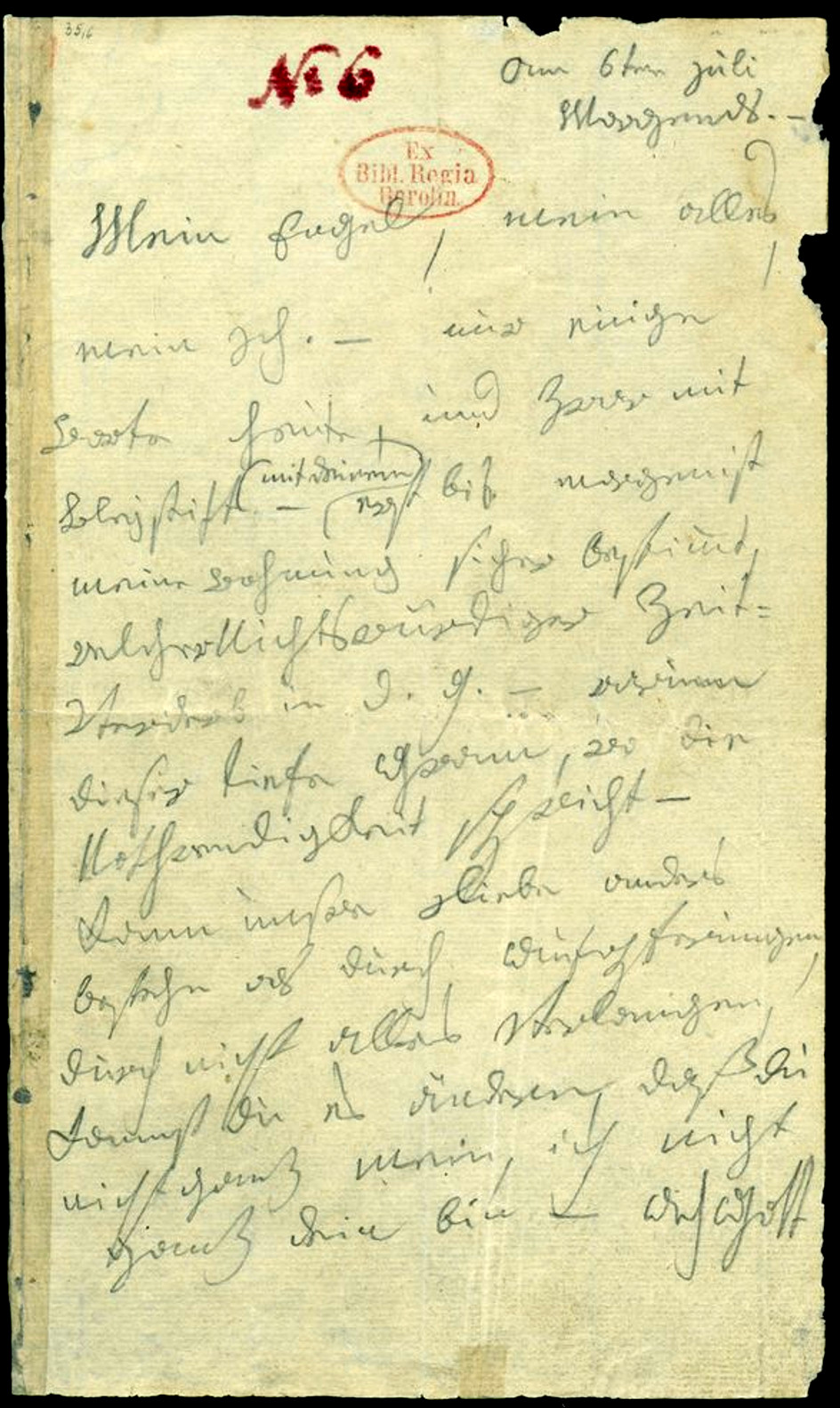|
Beethoven's Last Night
''Beethoven's Last Night'' is a rock opera by the Trans-Siberian Orchestra, released in 2000. The album tells the fictional story of Ludwig van Beethoven on the last night of his life, as the devil, Mephistopheles, comes to collect his soul. With the help of Fate and her son Twist, Beethoven unwittingly tricks the devil and is allowed to keep his soul which he had thought lost, but that the devil had no claim on. The album is a rock opera featuring many classical crossover rock songs which are clearly based on melodies from classical music, particularly Beethoven's works. It is the first Trans-Siberian Orchestra album that does not feature Christmas themes. The original cover art was created by Edgar Jerins, and re-issued cover art was created by Greg Hildebrandt. Story Late one night in spring 1827 (presumably March 26, the night he died), Ludwig van Beethoven has completed his masterpiece, his tenth symphony (which in reality, was never completed). Just as this work is fini ... [...More Info...] [...Related Items...] OR: [Wikipedia] [Google] [Baidu] |
Trans-Siberian Orchestra
Trans-Siberian Orchestra (TSO) is an American rock band founded in 1996 by producer, composer, and lyricist Paul O'Neill, who brought together Jon Oliva and Al Pitrelli (both members of Savatage) and keyboardist and co-producer Robert Kinkel to form the core of the creative team. The band gained in popularity when they began touring in 1999 after completing their second album, ''The Christmas Attic'', the year previous. In 2007, the ''Washington Post'' referred to them as "an arena-rock juggernaut" and described their music as "Pink Floyd meets Yes and the Who at Radio City Music Hall." TSO has sold more than 10 million concert tickets and over 10 million albums. The band has released a series of rock operas: ''Christmas Eve and Other Stories'', ''The Christmas Attic'', ''Beethoven's Last Night'', ''The Lost Christmas Eve'', their two-disc ''Night Castle'' and '' Letters From the Labyrinth''. Trans-Siberian Orchestra is also known for their extensive charity work and elaborate c ... [...More Info...] [...Related Items...] OR: [Wikipedia] [Google] [Baidu] |
Symphony No
A symphony is an extended musical composition in Western classical music, most often for orchestra. Although the term has had many meanings from its origins in the ancient Greek era, by the late 18th century the word had taken on the meaning common today: a work usually consisting of multiple distinct sections or movements, often four, with the first movement in sonata form. Symphonies are almost always scored for an orchestra consisting of a string section (violin, viola, cello, and double bass), brass, woodwind, and percussion instruments which altogether number about 30 to 100 musicians. Symphonies are notated in a musical score, which contains all the instrument parts. Orchestral musicians play from parts which contain just the notated music for their own instrument. Some symphonies also contain vocal parts (e.g., Beethoven's Ninth Symphony). Etymology and origins The word ''symphony'' is derived from the Greek word (), meaning "agreement or concord of sound", "concert of ... [...More Info...] [...Related Items...] OR: [Wikipedia] [Google] [Baidu] |
Für Elise
Bagatelle No. 25 in A minor (WoO59, Bia515) for solo piano, commonly known as "Für Elise" (, ), is one of Ludwig van Beethoven's most popular compositions. It was not published during his lifetime, only being discovered (by Ludwig Nohl) 40 years after his death, and may be termed either a ''Bagatelle'' or an . The identity of "Elise" is unknown; researchers have suggested Therese Malfatti, Elisabeth Röckel, or Elise Barensfeld. History The score was not published until 1867, forty years after the composer's death in 1827. The discoverer of the piece, Ludwig Nohl, affirmed that the original autograph manuscript, now lost, had the title: "Für Elise am 27 April 810zur Erinnerung von L. v. Bthvn" ("For Elise on April 27 in memory by L. v. Bthvn"). The music was published as part of Nohl's ''Neue Briefe Beethovens'' (New letters by Beethoven) on pages 28 to 33, printed in Stuttgart by Johann Friedrich Cotta. The version of "Für Elise" heard today is an earlier version that wa ... [...More Info...] [...Related Items...] OR: [Wikipedia] [Google] [Baidu] |
List Of Compositions By Frédéric Chopin
A ''list'' is any set of items in a row. List or lists may also refer to: People * List (surname) Organizations * List College, an undergraduate division of the Jewish Theological Seminary of America * SC Germania List, German rugby union club Other uses * Angle of list, the leaning to either port or starboard of a ship * List (information), an ordered collection of pieces of information ** List (abstract data type), a method to organize data in computer science * List on Sylt, previously called List, the northernmost village in Germany, on the island of Sylt * ''List'', an alternative term for ''roll'' in flight dynamics * To ''list'' a building, etc., in the UK it means to designate it a listed building that may not be altered without permission * Lists (jousting), the barriers used to designate the tournament area where medieval knights jousted * ''The Book of Lists'', an American series of books with unusual lists See also * The List (other) * Listing (d ... [...More Info...] [...Related Items...] OR: [Wikipedia] [Google] [Baidu] |
The Marriage Of Figaro
''The Marriage of Figaro'' ( it, Le nozze di Figaro, links=no, ), K. 492, is a ''commedia per musica'' (opera buffa) in four acts composed in 1786 by Wolfgang Amadeus Mozart, with an Italian libretto written by Lorenzo Da Ponte. It premiered at the Burgtheater in Vienna on 1 May 1786. The opera's libretto is based on the 1784 stage comedy by Pierre Beaumarchais, '' La folle journée, ou le Mariage de Figaro'' ("The Mad Day, or The Marriage of Figaro"). It tells how the servants Figaro and Susanna succeed in getting married, foiling the efforts of their philandering employer Count Almaviva to seduce Susanna and teaching him a lesson in fidelity. Considered one of the greatest operas ever written, it is a cornerstone of the repertoire and appears consistently among the top ten in the Operabase list of most frequently performed operas. In 2017, BBC News Magazine asked 172 opera singers to vote for the best operas ever written. ''The Marriage of Figaro'' came in first out of ... [...More Info...] [...Related Items...] OR: [Wikipedia] [Google] [Baidu] |
Ode To Joy
"Ode to Joy" (German language, German: , literally "To [the] Joy") is an ode written in the summer of 1785 by German poet, playwright, and historian Friedrich Schiller and published the following year in ''Thalia (magazine), Thalia''. A slightly revised version appeared in 1808, changing two lines of the first and omitting the last stanza. "Ode to Joy" is best known for its use by Ludwig van Beethoven in the final (fourth) movement of his Symphony No. 9 (Beethoven), Ninth Symphony, completed in 1824. Symphony No. 9 (Beethoven)#Text of the fourth movement, Beethoven's text is not based entirely on Schiller's poem, and it introduces a few new sections. His tune (but not Schiller's words) was adopted as the "Anthem of Europe" by the Council of Europe in 1972 and subsequently by the European Union. Rhodesia's national anthem from 1974 until 1979, "Rise, O Voices of Rhodesia", used the tune of "Ode to Joy". The poem Schiller wrote the first version of the poem in German when he w ... [...More Info...] [...Related Items...] OR: [Wikipedia] [Google] [Baidu] |
Requiem (Mozart)
The Requiem in D minor, K. 626, is a requiem mass by Wolfgang Amadeus Mozart (1756–1791). Mozart composed part of the Requiem in Vienna in late 1791, but it was unfinished at his death on 5 December the same year. A completed version dated 1792 by Franz Xaver Süssmayr was delivered to Count Franz von Walsegg, who commissioned the piece for a requiem service on 14 February 1792 to commemorate the first anniversary of the death of his wife Anna at the age of 20 on 14 February 1791. The autograph manuscript shows the finished and orchestrated Introit in Mozart's hand, and detailed drafts of the Kyrie and the sequence Dies irae as far as the first eight bars of the Lacrymosa movement, and the Offertory. It cannot be shown to what extent Süssmayr may have depended on now lost "scraps of paper" for the remainder; he later claimed the Sanctus and Benedictus and the Agnus Dei as his own. Walsegg probably intended to pass the Requiem off as his own composition, as he is know ... [...More Info...] [...Related Items...] OR: [Wikipedia] [Google] [Baidu] |
Piano Sonata No
The piano is a stringed keyboard instrument in which the strings are struck by wooden hammers that are coated with a softer material (modern hammers are covered with dense wool felt; some early pianos used leather). It is played using a keyboard, which is a row of keys (small levers) that the performer presses down or strikes with the fingers and thumbs of both hands to cause the hammers to strike the strings. It was invented in Italy by Bartolomeo Cristofori around the year 1700. Description The word "piano" is a shortened form of ''pianoforte'', the Italian term for the early 1700s versions of the instrument, which in turn derives from ''clavicembalo col piano e forte'' (key cimbalom with quiet and loud)Pollens (1995, 238) and ''fortepiano''. The Italian musical terms ''piano'' and ''forte'' indicate "soft" and "loud" respectively, in this context referring to the variations in volume (i.e., loudness) produced in response to a pianist's touch or pressure on the keys: the grea ... [...More Info...] [...Related Items...] OR: [Wikipedia] [Google] [Baidu] |
Heaven
Heaven or the heavens, is a common religious cosmological or transcendent supernatural place where beings such as deities, angels, souls, saints, or venerated ancestors are said to originate, be enthroned, or reside. According to the beliefs of some religions, heavenly beings can descend to Earth or incarnate and earthly beings can ascend to Heaven in the afterlife or, in exceptional cases, enter Heaven alive. Heaven is often described as a "highest place", the holiest place, a Paradise, in contrast to hell or the Underworld or the "low places" and universally or conditionally accessible by earthly beings according to various standards of divinity, goodness, piety, faith, or other virtues or right beliefs or simply divine will. Some believe in the possibility of a heaven on Earth in a ''world to come''. Another belief is in an axis mundi or world tree which connects the heavens, the terrestrial world, and the underworld. In Indian religions, heaven is considered a ... [...More Info...] [...Related Items...] OR: [Wikipedia] [Google] [Baidu] |
Muse
In ancient Greek religion and mythology, the Muses ( grc, Μοῦσαι, Moûsai, el, Μούσες, Múses) are the inspirational goddesses of literature, science, and the arts. They were considered the source of the knowledge embodied in the poetry, lyric songs, and myths that were related orally for centuries in ancient Greek culture. Melete, Aoede, and Mneme are the original Boeotian Muses, and Calliope, Clio, Erato, Euterpe, Melpomene, Polyhymnia, Terpsichore, Thalia, and Urania are the nine Olympian Muses. In modern figurative usage, a Muse may be a source of artistic inspiration. Etymology The word ''Muses'' ( grc, Μοῦσαι, Moûsai) perhaps came from the o-grade of the Proto-Indo-European root (the basic meaning of which is 'put in mind' in verb formations with transitive function and 'have in mind' in those with intransitive function), or from root ('to tower, mountain') since all the most important cult-centres of the Muses were on mountains or hills. ... [...More Info...] [...Related Items...] OR: [Wikipedia] [Google] [Baidu] |
Immortal Beloved
The Immortal Beloved (German "Unsterbliche Geliebte") is the addressee of a love letter which composer Ludwig van Beethoven wrote on 6–7 July 1812 in Teplitz. The unsent letter is written in pencil on 10 small pages. It was found in the composer's estate following his death and is now in the Berlin State Library. Beethoven did not specify a year or a location. In the 1950s an analysis of the paper's watermark yielded the year, and by extension the place of the letter. Scholars disagree about the intended recipient of the letter. Two people favoured by most contemporary scholars are Antonie Brentano and Josephine Brunsvik. (Other possibilities include Johanna van Beethoven, Julie ("Giulietta") Guicciardi, Therese Brunsvik, Amalie Sebald, Dorothea von Ertmann, Therese Malfatti, Anna Maria Erdődy, and Bettina von Arnim.) Text analysis After Schmidt-Görg (1957) published 13 then-unknown love letters by Beethoven to Josephine Brunsvik, it became clear that the one to the "Im ... [...More Info...] [...Related Items...] OR: [Wikipedia] [Google] [Baidu] |








